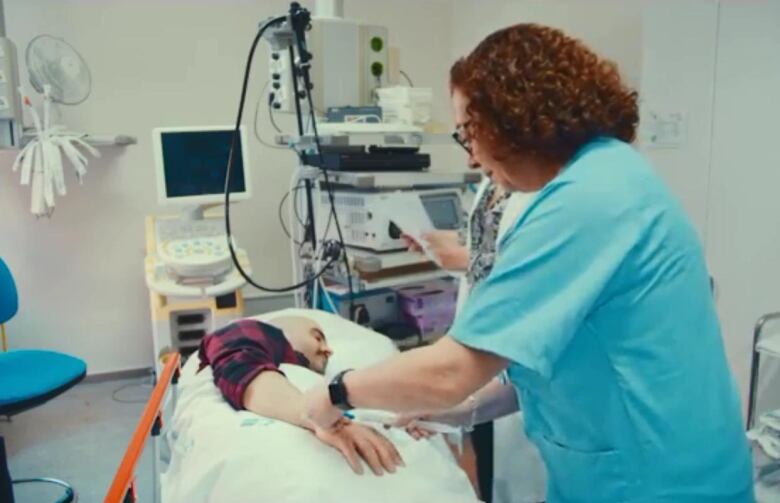How to remember to forget — the new science of erasing memories
Scientists may be able to weaken traumatic memories which are more fluid than you'd think

Scientists are learning that memory is much more fluid and flexible than we'd ever thought, and are exploring ways to use this flexibility to weaken memories. This could lead to new ways to deal with traumatic memories, or perhaps even remove them altogether.
When it comes to memory, we usually think about how to improve it to make it work better. But for people with traumatic memories or PTSD, the problem isn't remembering — it's forgetting.
New insights into the way that memories become vulnerable to change or manipulation at the moments when they're being recalled are leading researchers to target this critical moment with drug and cognitive therapies.
A drug to help you forget
Bryan Strange, the director of the Laboratory for Clinical Neuroscience at the Technical University of Madrid, has been doing experiments that use carefully timed doses of anaesthetic drugs to weaken memories,
His latest research relies on the "reconsolidation hypothesis." This is the notion that recalling a memory activates it for a period of time before it is stored again. This time of reactivation is what his research is targeting.
"If you reactivate or retrieve a memory, you make it vulnerable again to manipulation," Strange told Quirks & Quarks host Bob McDonald.
For an experiment to test whether drugs could affect memories during activation and reconsolidation, he and his team recruited 50 healthy individuals undergoing an endoscopy procedure.

They were presented two stories a week before the procedure. One was about a boy who was involved in a car accident, and the other was about a young woman being taken hostage.
A week later, they came back to the hospital and were given the anaesthetic propofol to put them in a deeply sedated state before their endoscopy procedure.
Just before the anesthetic was administered, the participants were shown a slide from one of the stories to reactivate their memory for that story.
After their procedure, they had a memory test on both of the stories that were presented to them a week earlier.

One group was tested immediately after their procedure, and the team found that the reactivation of the memory had no effect on their memory scores — they performed equally well on the reactivated and non-reactivated stories.
But the other group, was tested 24 hours later, and their recall was significantly diminished. Strange thinks this is because it takes time for the anaesthetic to affect the memory and for the changes to be fixed back into the memory.
The experiment demonstrated that reactivating a memory followed by a dose of anaesthetic could successfully weaken it.
This could be the proof-of-principle for developing a memory therapy, but more research will be necessary before this approach could be used on real-life memories, said Strange.
Mind control to help you forget
Jarrod Lewis Peacock, an assistant professor in the Department of Psychology at the University of Texas, is approaching the goal of weakening memories in a different way.
He's focussing on the same strategy of attempting to disrupt memory reconsolidation, by conjuring up a memory to put it in a malleable state that is ripe for manipulation. But his technique is drug-free and involves subtly changing the way people think about memories before they're re-written into the brain.

In a recent experiment by his group, participants were put in a brain scanner and were shown pictures of faces and scenes, one at a time, followed by an instruction to either remember the image or to forget it. What they were focussing on was how hard people were thinking about the memories they were working with
"We can read out face information and scene-related information from the brain pretty well, and sort of quantify how strongly they are attending to that information," Lewis-Peacock explained.

A memory test followed after the participants reviewed the images. The surprising key finding of the study was that forgetting was more successful when the brain was only moderately activated.
"If we look trial by trial, when people are more engaged with the information they're trying to forget, they are more likely to remember it; same with if they totally put it out of their mind." Lewis-Peacock said.
"If you engaged it a little bit — not none and not too much — that's what led to the most successful forgetting."
Lewis-Peacock says the findings back up the idea that memories are quite malleable and people do have some degree of control over them. That control seems to be around a "sweet-spot" in the intensity of activation of the memory. Not too much, not too little, but just right.
The next stage in his work is figuring out a way to help people hit that sweet spot - where memories can be weakened. He imagines an neurofeedback system that monitors the brain and "coaches" a person to think about a memory just the right amount.
"We can calibrate that activation — tell them to think a little bit more or think a little bit less — and use that as a way to put that memory in a vulnerable state and perhaps we can have more success at modifying that memory."